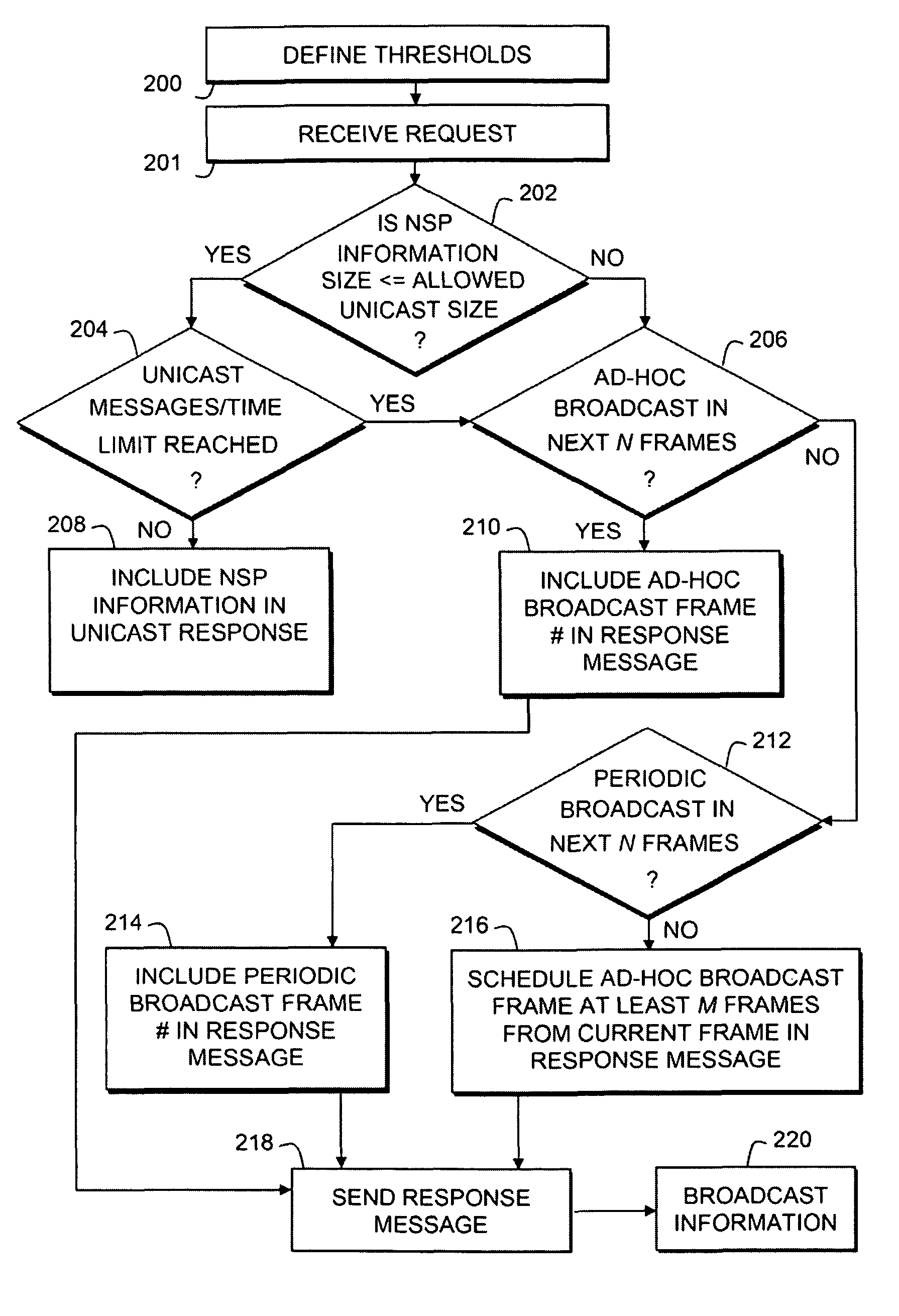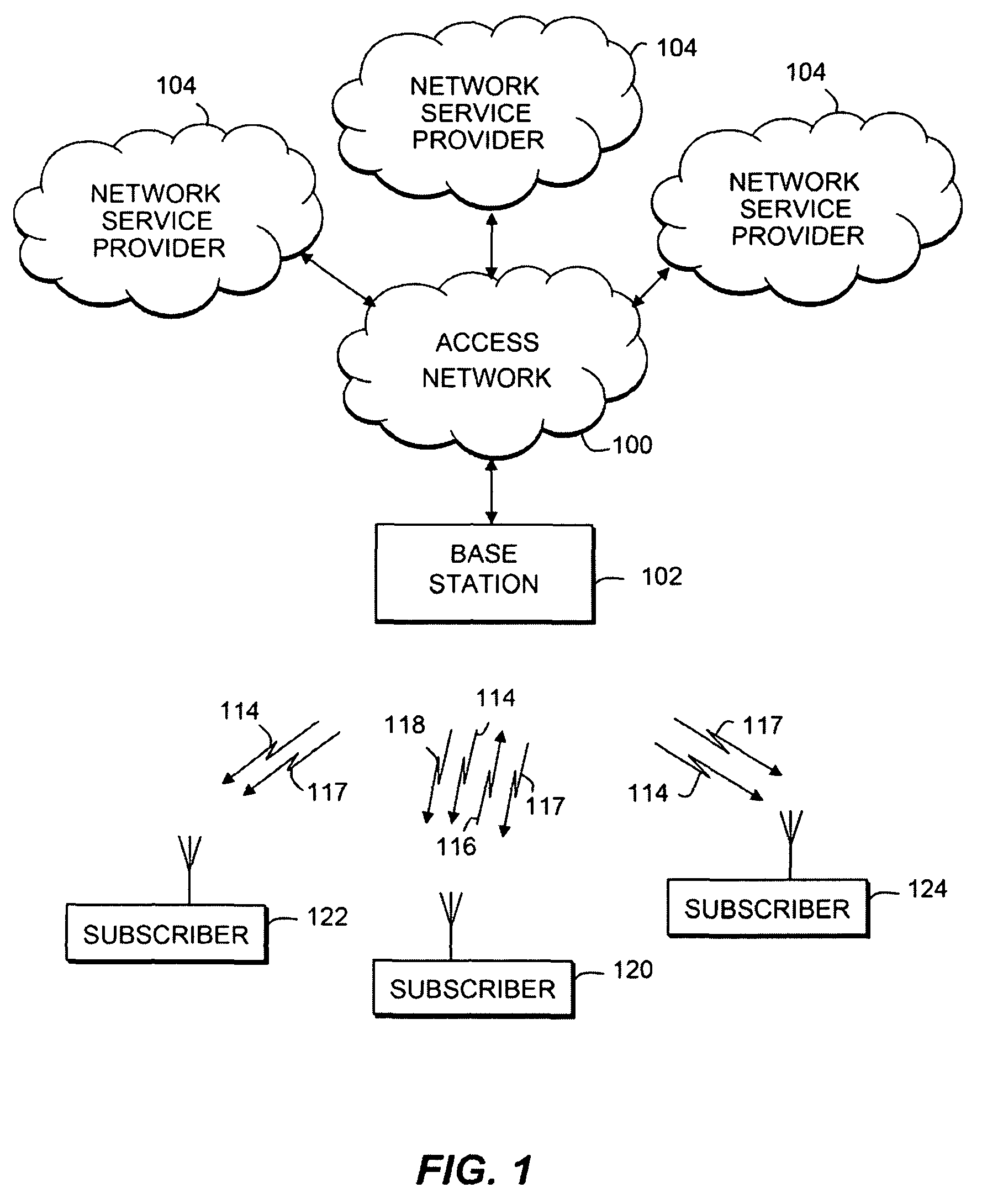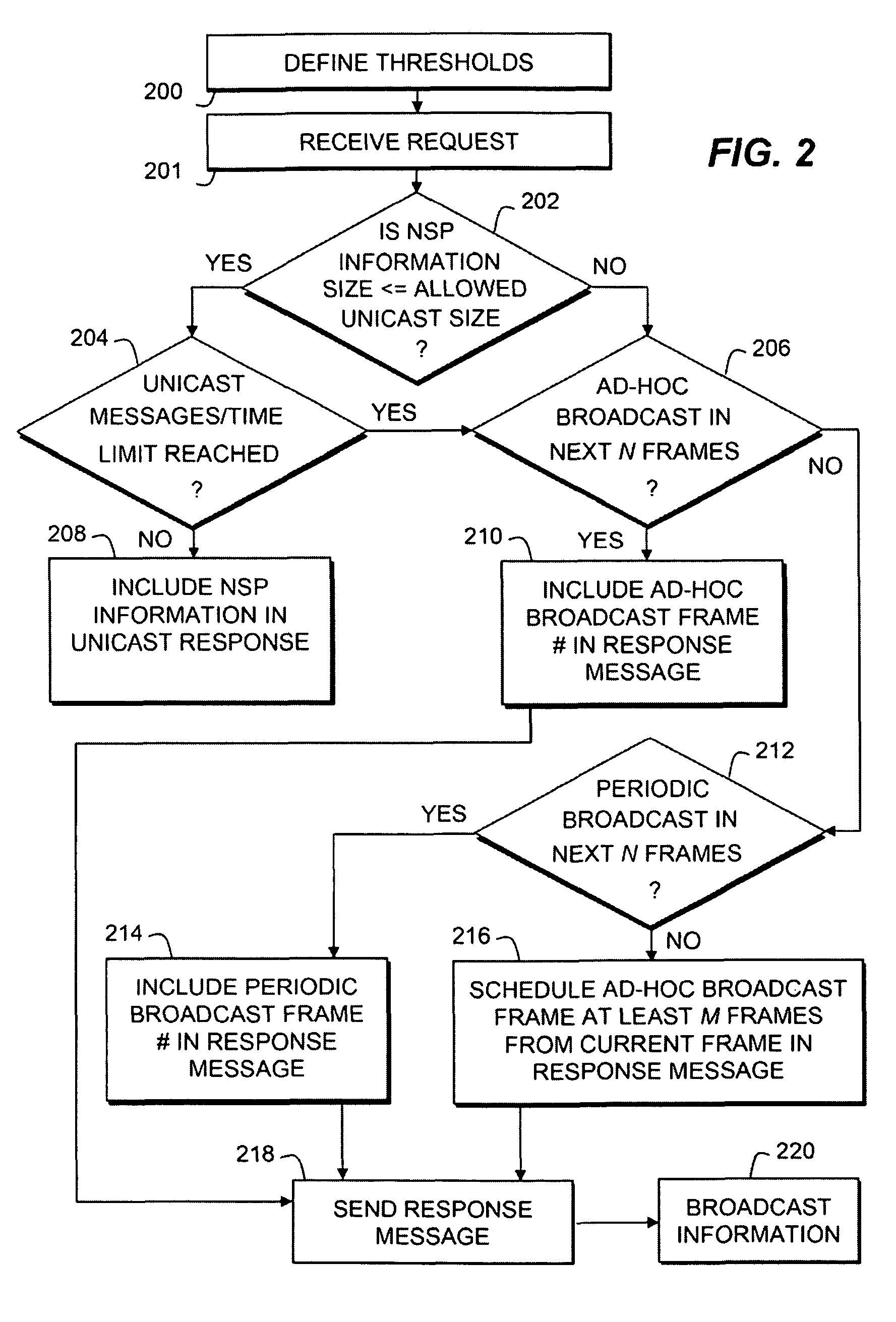Communicating system information in a wireless communication network
wireless communication technology, applied in the field of apparatus and methods for communicating system information in a wireless communication network, can solve the problems of unfavorable unicast, waste of signaling air capacity, unacceptable latency,
- Summary
- Abstract
- Description
- Claims
- Application Information
AI Technical Summary
Benefits of technology
Problems solved by technology
Method used
Image
Examples
example
[0033]The present invention provides a substantial reduction in average air traffic and latency. Against the prior art use of periodic broadcast only, the present invention provides a Network Discovery & Selection (ND&S) Latency reduction of as much as 95%. For example, assuming a periodic broadcast is done every ten seconds, and an ad-hoc broadcast can be scheduled M=100 frames from the current frame (0.5 second), then the present invention can result in up to a 95% reduction in latency. Against the prior art use of unicast messaging upon every request, the present invention provides a signaling air traffic capacity savings of 88.3%. For example, where one-hundred SSs are performing ND&S uniformly over a period of five seconds, M=100 frames, ten subscribers use one ad-hoc broadcast, thus needing ten broadcasts for one-hundred SSs. When the NSP information is unicast in the SBC-RSP, its size is determined by the NSP-List TLV, Verbose NSP Name TLV, the MAC message overhead (MAC heade...
PUM
 Login to View More
Login to View More Abstract
Description
Claims
Application Information
 Login to View More
Login to View More - R&D
- Intellectual Property
- Life Sciences
- Materials
- Tech Scout
- Unparalleled Data Quality
- Higher Quality Content
- 60% Fewer Hallucinations
Browse by: Latest US Patents, China's latest patents, Technical Efficacy Thesaurus, Application Domain, Technology Topic, Popular Technical Reports.
© 2025 PatSnap. All rights reserved.Legal|Privacy policy|Modern Slavery Act Transparency Statement|Sitemap|About US| Contact US: help@patsnap.com



